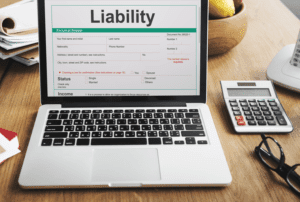What are conversion costs?

During a month, Company B has a total cost of $55,000 in direct labor and $66,000 in factory overhead costs. Sometimes individuals become managers due to their knowledge of the production process but not necessarily the costs. Managers can view this information on the importance of identifying prime and conversion costs from Investopedia, a resource for managers. In the Peep-making process, the direct materials of sugar, corn syrup, gelatin, color, and packaging materials are added at the beginning of steps 1, 2, and 5. While the fully automated production does not need direct labor, it does need indirect labor in each step to ensure the machines are operating properly and to perform inspections (step 4). Conversion costs are also used as a way to measure the efficiencies in the production processes but they also take into account the overheads in the production process, which are not calculated in prime costs.

How to Calculate Goods in Process Inventory
Compensation paid to machinists, painters, or welders is common in calculating prime costs. Indirect materials, electricity charges and salaries of engineer and supervisor are all indirect costs and have, therefore, been added together to obtain total manufacturing overhead cost. Timber, glue, nails, glass and finishing materials have been treated as direct materials because they all become part of finished and ready to sell table.
What Is Financial Gearing? And Why Is It Happening?
Direct labor costs are the wages and salaries paid to employees who are directly involved in the production process. This includes assembly line workers, machine operators, and other staff who work directly on manufacturing the product. Direct labor is the cost that a manufacturing entity incurs for wages, salaries and benefits provided to production workers i.e., the workers who directly and physically handle the manufacturing process in a facility. Examples of direct labor workers include welders, machine operators, assemblers and painters etc. Manufacturing cost is the cost that company spends to support the production process but they cannot allocate to each product. They are the indirect cost that incurs to support the manufacturing, but it is very challenging to apply the cost to each production unit.
Difference between Conversion Cost and Prime Cost
The conversion cost, when used in conjunction with prime cost, helps reduce waste and gauge other operational inefficiencies that may be present within the manufacturing facility. If your conversion goal is more than just a website visit, look at your landing pages. Confirm that the landing page is relevant to the viewers and encourages them conversion cost formula to complete the action that is your goal. For example, if your conversion metric is signing up for your email list, the signup form should be prominent. How to assess conversion cost if it is watching a video, the video should be prominent. Numerous manufacturing overhead costs are encountered in manufacturing facilities and processes.
- Prime costs are the direct labor and direct materials costs incurred to build a product.
- Yes, conversion costs can change based on factors like labor rates, overhead expenses, and efficiency improvements.
- Both provide an overview of the company’s expenses that affect the production process and help the company make favourable financial decisions.
- In some industries, conversion costs, including labour expenses, can exceed the total expenses on raw materials.
- According to Accounting Coach, conversion costs refer to the costs involved in converting raw materials into finished goods.
- Manufacturing overheads used in calculating conversion costs are the overheads that cannot be attributed to the production process or a single unit in production, for example, rent or electricity.
Why Are Conversion Costs Important?

The 1,200 ending work in process units are only 35% complete with regard to conversion costs and represent 420 (1,200 × 35%) equivalent units. The true cost a company uses in the process of turning raw materials into finished goodsincludes both overhead and direct labor. Managerial accountants and production managers measure these conversion costs to estimate production expenses, develop product-pricing models, and estimate the value of finished inventory. Managers also use these costs to evaluate the efficiency of the production process and identify waste. The total materials costs for the period (including any beginning inventory costs) is computed and divided by the equivalent units for materials.
- This guide will explain what conversion cost is, how it is calculated, and provide an example to make it easy to understand.
- For the basic size 5A stick, the packaging department adds material at the beginning of the process.
- From the definition, the conversion cost is a term used to refer to the costs incurred by a company while converting raw materials into furnished products that are up for sale in the market.
- In the food industry, converting raw food materials into edible food items is labour-intensive and requires specialised machinery.
- In addition to the equivalent units, it is necessary to track the units completed as well as the units remaining in ending inventory.
Activity Sampling (Work Sampling): Unveiling Insights into Work Efficiency
Of course, that is not always possible, such as in the case of shorter advertising campaigns. Textbook content produced by OpenStax is licensed under a Creative Commons Attribution-NonCommercial-ShareAlike License . They refer to the worker wage, bonus, workers’ salary, pension fund, and insurance for these workers. It is rudimentary to gauge the value of closing inventory since it is a line item reported on both the income statement and the company’s balance sheet.
How to Calculate Conversion Cost Formula Example

For instance, the engine of a car and the spokes of a bicycle are considered direct material costs because they are necessary to complete the production of those items. Both these components are added together in order to arrive at the figure for conversion costs for the company for the particular year. Conversion costs are essential for accurately pricing products, managing expenses, and optimizing production processes. They offer insights into the efficiency of manufacturing operations and potential areas for cost reduction.
Example of How Conversion Costs Work

Tangible components—such as raw materials—that are needed to create a finished product are included in direct materials. Prime costs and conversion costs are relied upon heavily in the manufacturing sector to measure https://www.bookstime.com/ efficiency in the production of a product. Prime costs are expenditures directly related to creating finished products, while conversion costs are expenses incurred when turning raw materials into a product.
